Sunlight can make some minerals look really pretty because it brings out their colors. Jasper, diamonds, and aquamarine are examples of minerals that are okay to keep in the sun.
But not all minerals are the same when it comes to sun exposure. Some can get damaged or fade if they spend too much time in light and heat. It’s important to know which ones can handle being out in the sunshine.
Fascinating Sun-Safe Rocks and Minerals
Keeping rocks and crystals away from exposure to too much light and heat is a common practice. While some rocks are sun safe, make sure that you don’t leave these rocks out in the sunlight for long periods.
The minerals below are the ones that can be safely exposed to sunlight, either for a few hours or longer.
Diamond
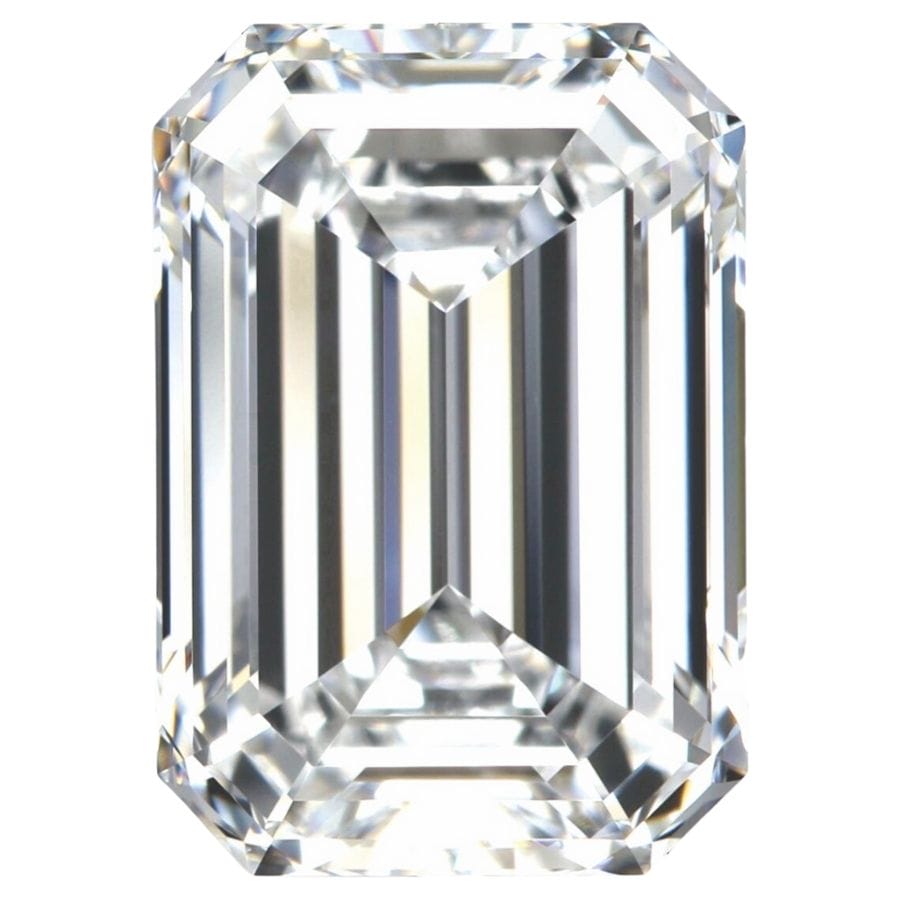
Diamonds are made of just one thing: carbon. They form deep in the Earth under extreme heat and pressure, and sometimes volcanic eruptions bring them closer to the surface.
Diamonds can be clear or come in colors like yellow, blue, and pink. They are the hardest natural material on Earth, which means they can scratch any other substance, and they have a shiny luster and a crystal structure that reflects light beautifully.
Diamonds don’t get damaged by sunlight because of their strong carbon bonds. These bonds give diamonds their incredible hardness and stability, making them able to resist the effects of UV light and heat from the sun.
Jasper
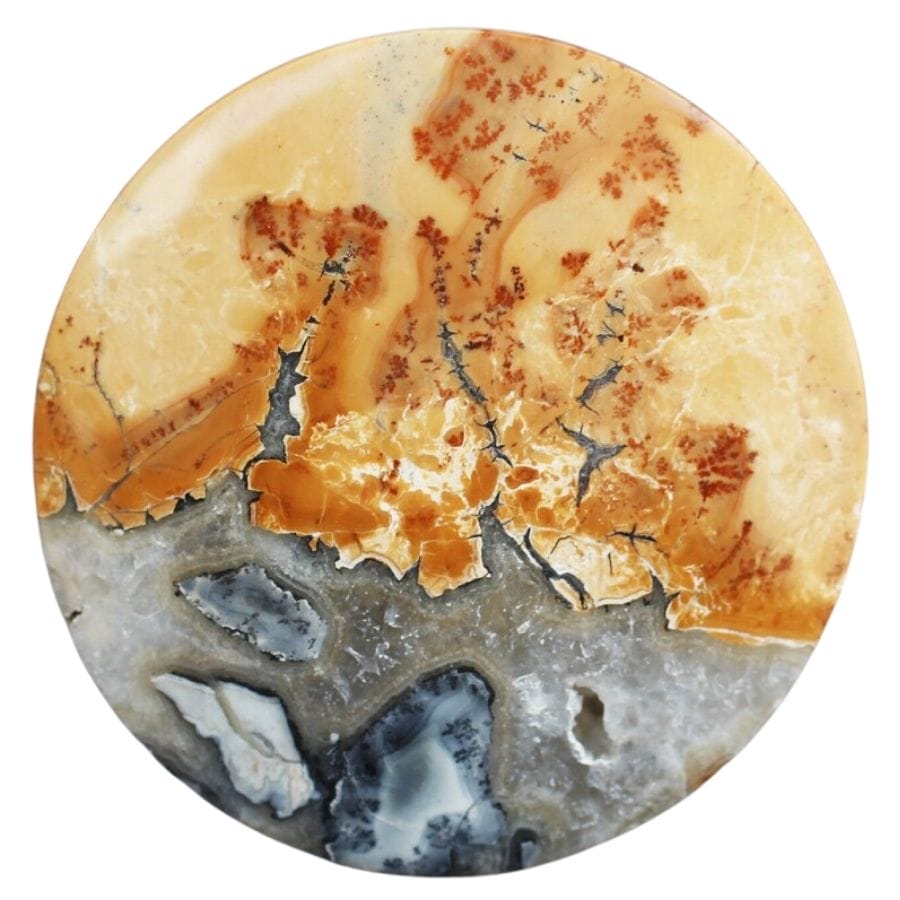
Jasper is a kind of quartz, which means it’s mostly made of silica. It forms from volcanic ash or sediment, becoming solid under heat and pressure over time, often found in nodules or as fillings in cracks.
Jasper is known for its smooth surface and can come in many colors like red, yellow, brown, or green. It’s pretty hard, though not as hard as diamond, and has a matte to slightly shiny luster.
The colors in jasper are stable, meaning they don’t fade easily in sunlight. This is because the silica and other minerals mixed in jasper are not very reactive to light.
Tiger’s Eye
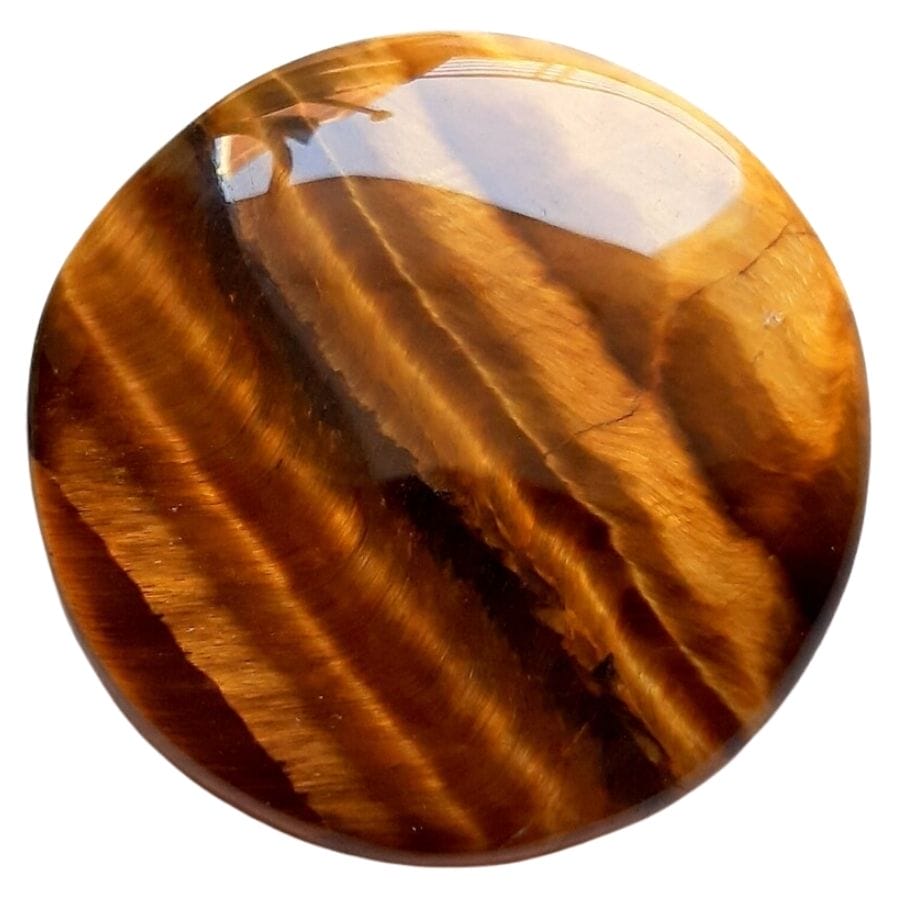
Tiger’s eye is a gemstone that forms when quartz slowly replaces crocidolite, a type of asbestos. This transformation happens in rocky areas, creating bands of color as the quartz takes over.
This stone is known for its silky luster and stunning bands of gold, yellow, and brown colors. It also has a unique crystal structure that reflects light in a distinct, shimmering pattern known as chatoyancy.
Tiger’s eye is tough against sunlight damage because its colors are naturally stable. The quartz in tiger’s eye is resistant to fading, which helps it keep its striking look even when exposed to bright light for a long time.
Hematite
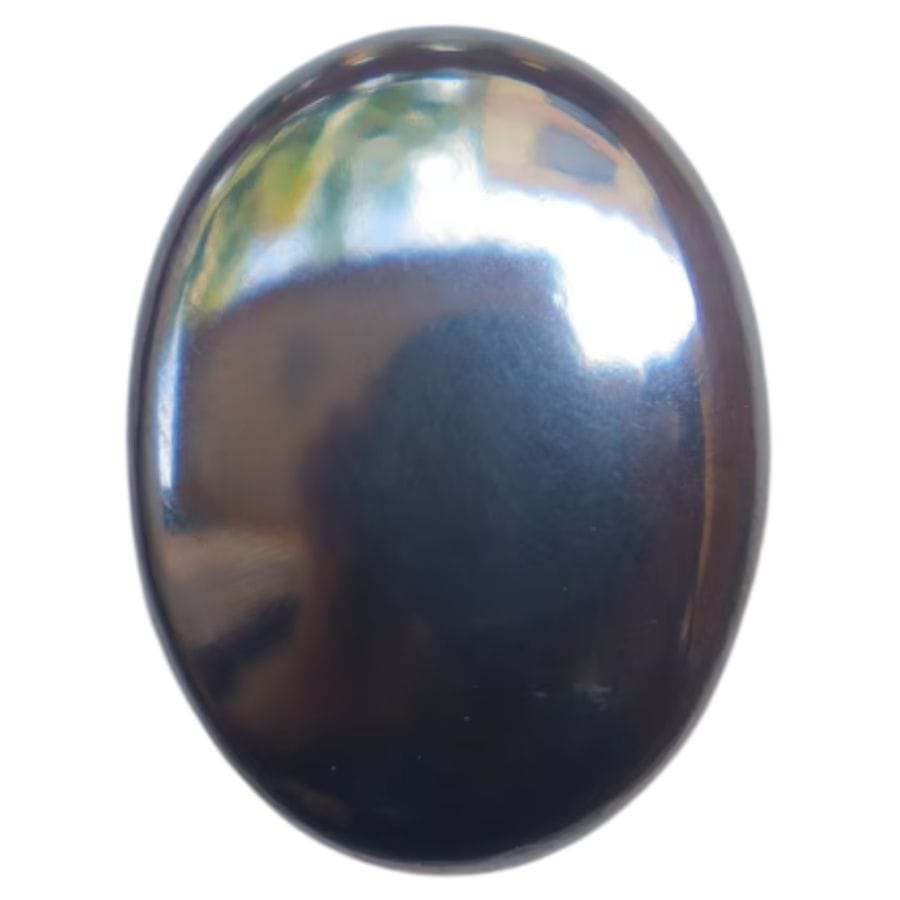
Hematite is an iron oxide mineral, which means it’s mostly made of iron and oxygen. It forms in many places, including in water, volcanic activity, or as deposits in iron-rich areas, making it pretty common around the world.
This mineral is known for its shiny, silvery color and smooth to rough texture. Hematite can be pretty hard, and it has a crystal structure that can be either massive or granular, depending on how it forms.
Hematite’s color and structure make it resistant to sunlight damage. Its iron content and the way it bonds with oxygen give it a stable color that doesn’t fade easily in the sun, keeping its metallic shine even after long exposure to light.
Malachite
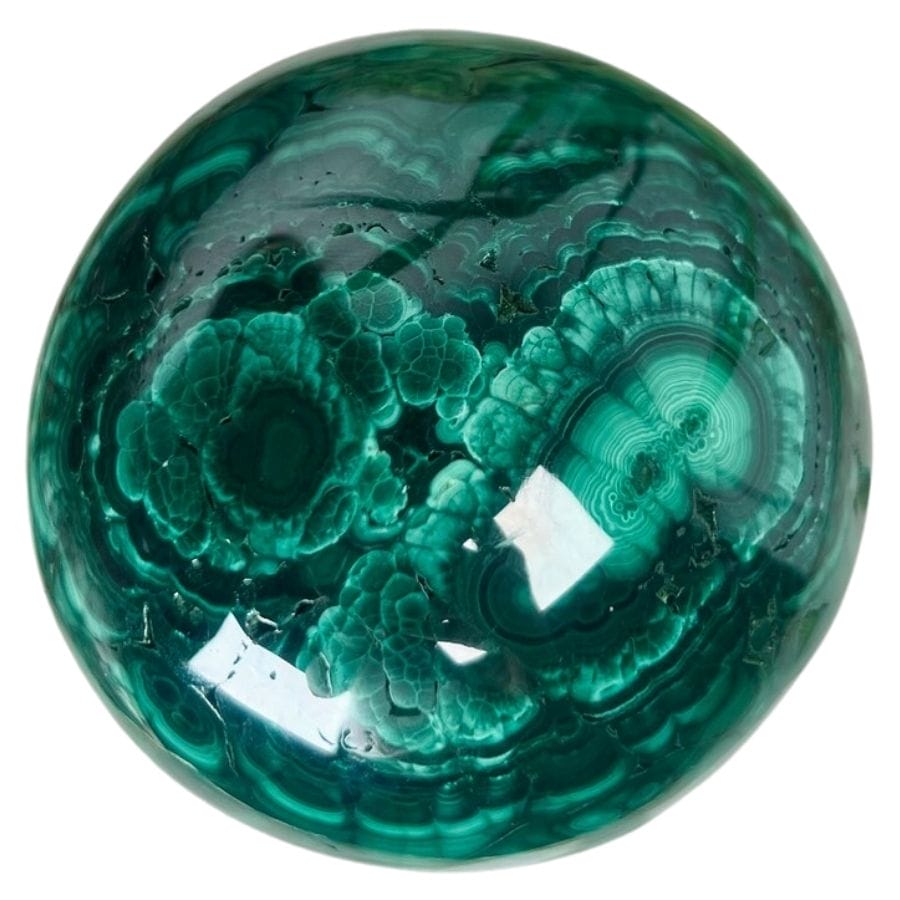
Malachite is made up of copper carbonate hydroxide. It usually forms in the upper parts of copper deposits where copper minerals are exposed to oxygen and water, creating bright green layers.
Malachite is famous for its deep, vibrant green color and unique banded patterns. It has a silky to submetallic luster and a relatively soft hardness, which makes it popular for carved objects and jewelry.
The crystal structure of malachite is monoclinic, contributing to its distinctive appearance.
Despite its vibrant color, malachite is quite stable in sunlight. This stability comes from its chemical makeup, which doesn’t easily react to the sun’s UV rays, keeping its green color bright and unfaded over time.
Lapis Lazuli
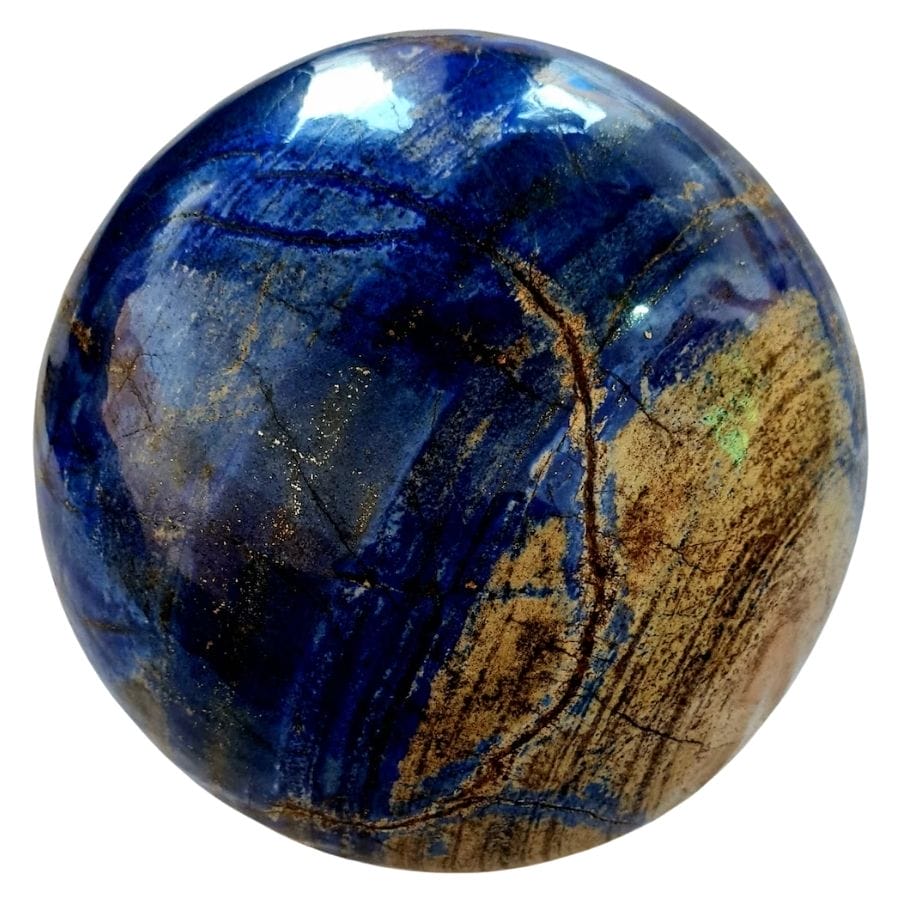
Lapis lazuli is a beautiful blue stone made up of several minerals, including lazurite, calcite, and pyrite. It’s usually found in limestone in mountainous areas, mainly in countries like Afghanistan and Chile.
This stone is well-known for its deep, vibrant blue color, which can sometimes have white or golden specks because of the calcite and pyrite mixed in. It’s not very hard, ranking about 5 to 5.5 on the Mohs scale.
One of the coolest things about lapis lazuli is that its color doesn’t fade easily in sunlight. This is because the minerals it’s made of are very stable when exposed to light.
Obsidian
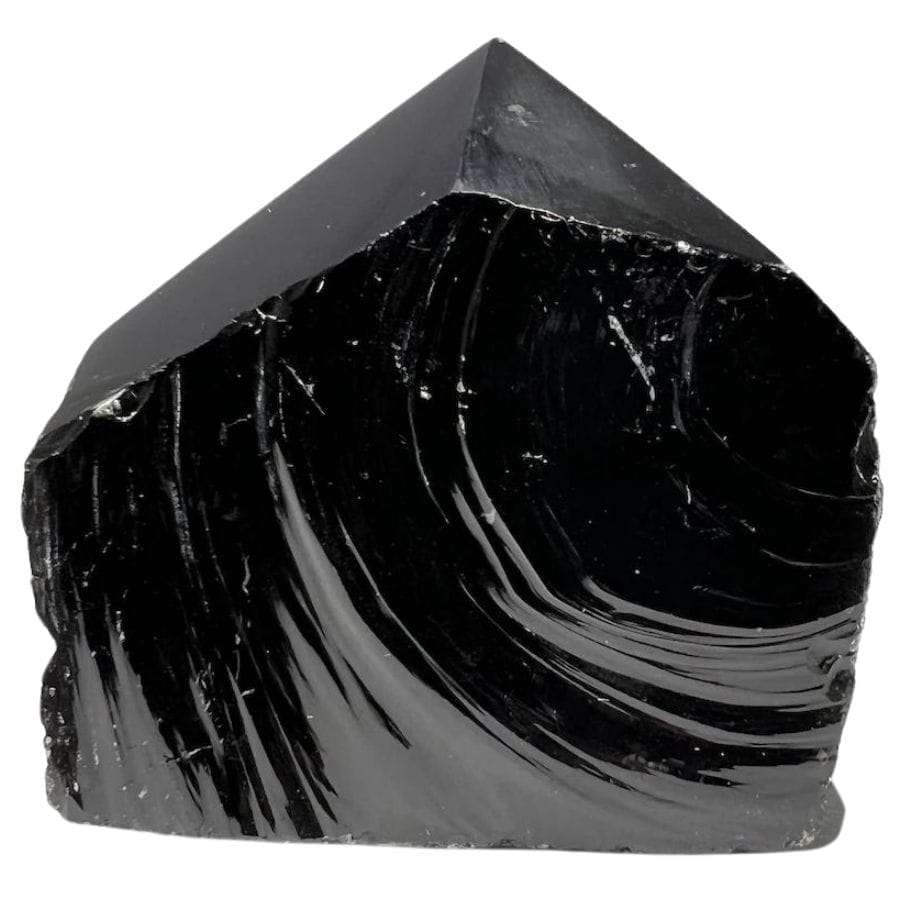
Obsidian is a cool, glassy rock formed when volcanic lava cools very quickly. You can find it in places with volcanic activity, like Iceland and the United States.
This rock is usually very shiny and can be black, brown, or even green. It’s pretty smooth, has a glassy luster, and is quite hard, about 5 to 6 on the Mohs scale.
Obsidian’s colors don’t fade in sunlight, which is pretty awesome. This is because its glassy nature is stable and doesn’t react much with sunlight, keeping its shiny, dark appearance for a very long time without changing.
Peridot
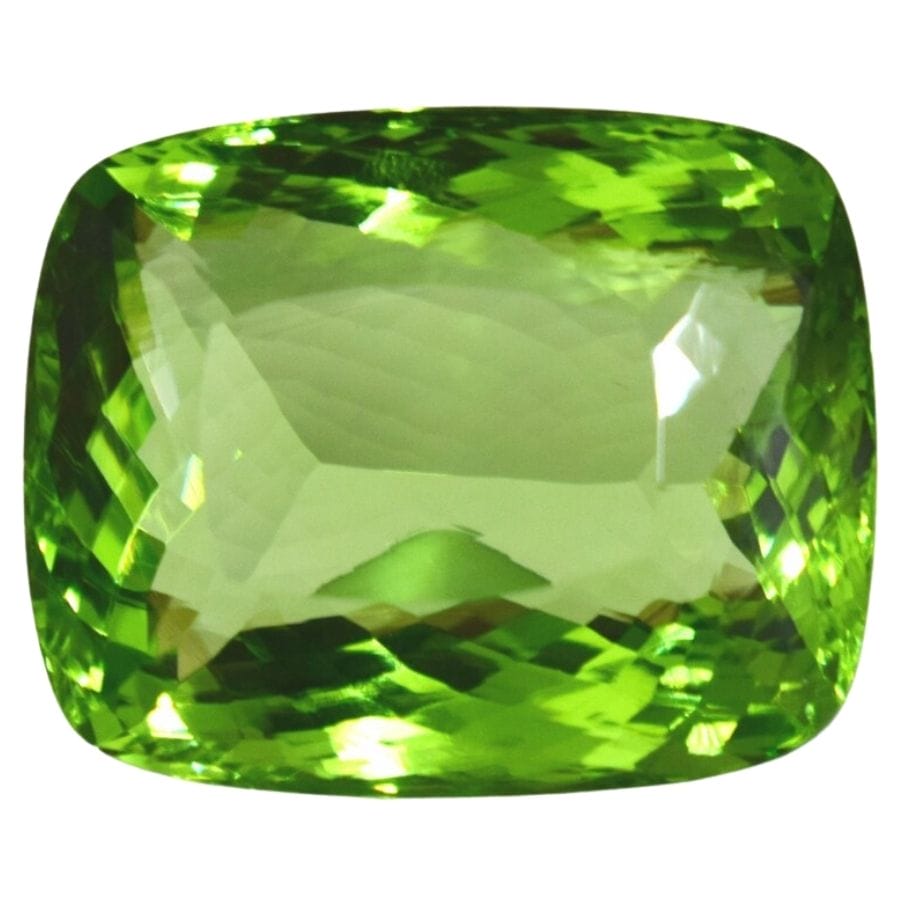
Peridot is a gemstone that’s made up mostly of the mineral olivine. It forms deep inside the Earth’s mantle and comes to the surface through volcanic eruptions, which is why it’s often found in lava rocks and sometimes in meteorites.
This gemstone is known for its bright, olive-green color, which can vary from yellow-green to brownish-green depending on how much iron is in it.
Peridot is pretty tough when it comes to dealing with sunlight. Its color remains stable and doesn’t fade because the chemical makeup of the stone doesn’t change or break down with exposure to light.
This ensures that its vibrant green hue lasts for a very long time.
Carnelian
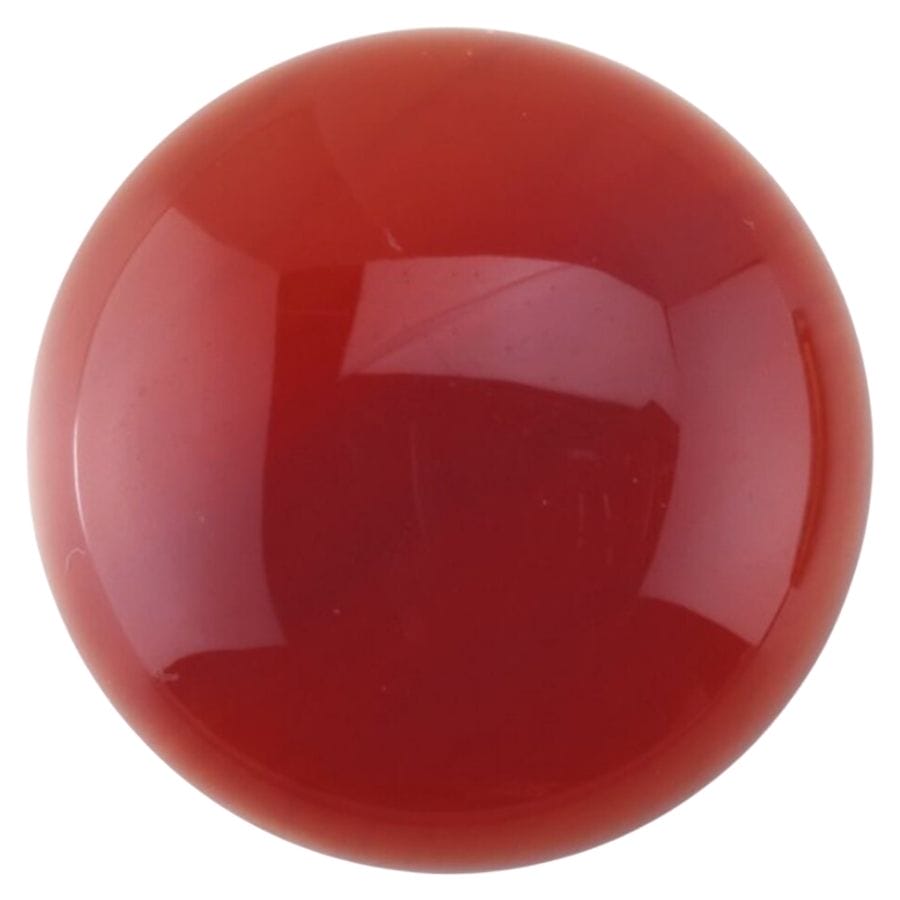
Carnelian is a pretty stone that’s part of the quartz family. It’s formed from silica-rich waters in the ground, which harden over time into the colorful stones we see, often found in places with volcanic rocks or weathered down from older rocks.
This stone stands out because of its warm red, orange, or brown colors, which come from the iron oxide within it. Carnelian has a smooth, glassy luster, and is fairly hard with a rating of 6 to 7 on the Mohs scale.
Carnelian’s colors stay bright and clear even when exposed to sunlight for a long time. This is because the iron oxide that gives carnelian its color is very stable under sunlight.
Sunstone
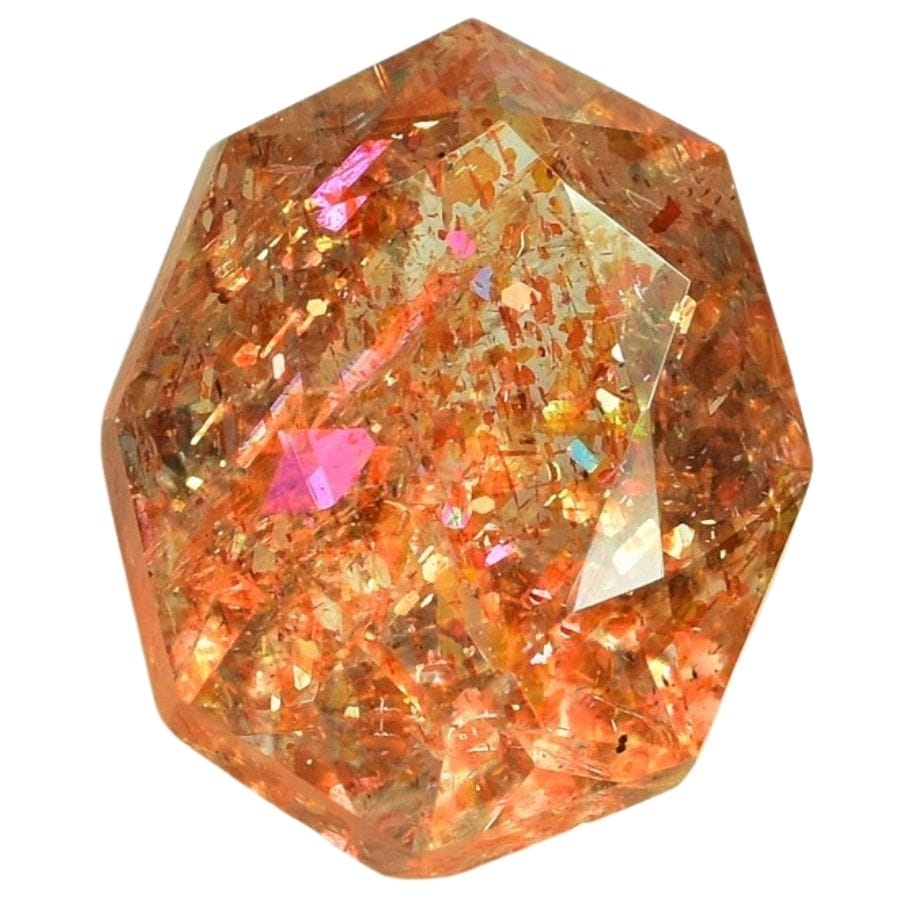
Sunstone is a sparkly gemstone that’s part of the feldspar family, which is one of the most common types of minerals in the Earth’s crust. It forms in molten lava and is revealed through the cooling process.
This gem is famous for its glittery appearance, which can range in color from orange and red to brown and even green. Sunstone has a beautiful shimmering effect thanks to tiny plate-like inclusions inside it, gives it a lustrous sheen.
The reason sunstone can handle sunlight well is due to its stable mineral composition. The tiny reflective inclusions that give it its sparkle don’t degrade under sunlight, which means its dazzling colors and shimmer won’t fade away.
Moonstone
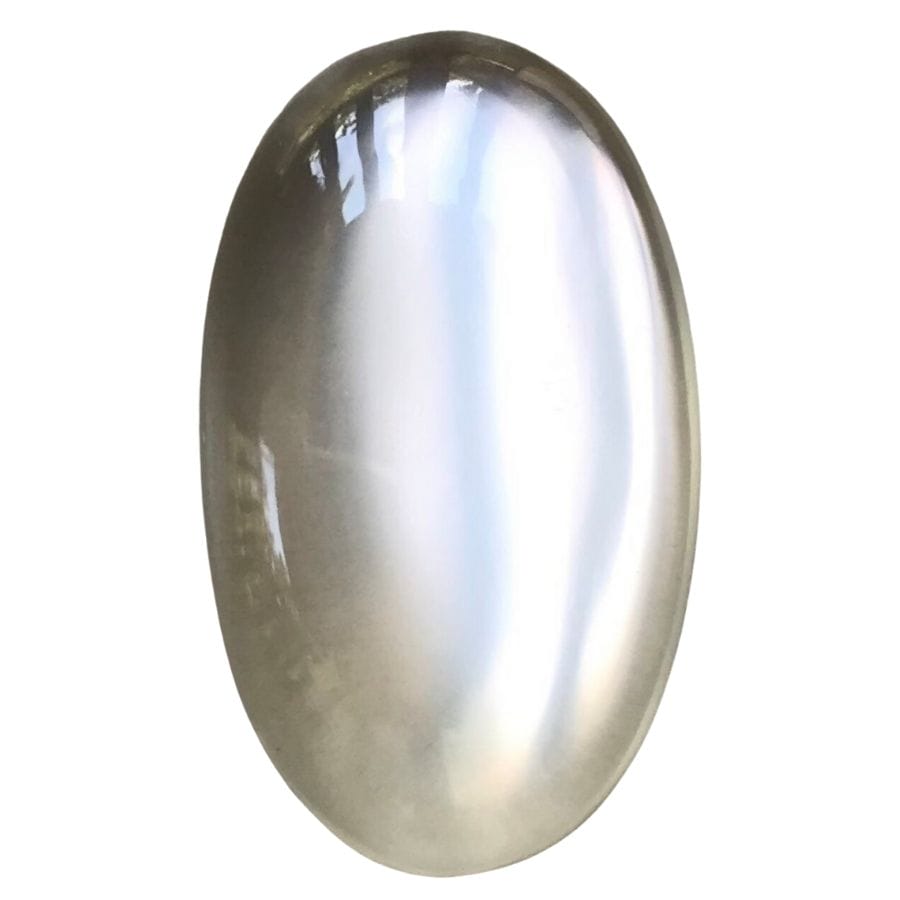
Moonstone is a beautiful gem that belongs to the feldspar group, just like sunstone. It’s formed deep in the earth and often found in places with volcanic rocks or ancient mountain ranges.
Moonstone is known for its dreamy look, with colors that range from clear to blue, peach, and even rainbow. It has a unique glow called adularescence, which makes it look like moonlight is shining from within.
What’s cool about moonstone is that its glow doesn’t fade in the sun. This is because the layers inside the stone that create its glow are stable and don’t break down with sunlight exposure.
Kyanite

Kyanite is a mineral that’s mostly found in metamorphic rocks, which are rocks that have changed because of heat and pressure deep inside the Earth. It’s often discovered in mountain regions.
Kyanite stands out because of its striking blue color, but it can also be found in green, black, and orange. The crystals form in long, thin blades, giving them a distinctive look.
Furthermore, kyanite has a pearl-like luster and is unique because it has different hardnesses in different directions: about 4.5 across the crystal and 6 to 7 along its length.
One of the neat things about kyanite is that its color remains stable when exposed to sunlight. This stability comes from its strong crystal structure and the type of chemical bonds it has.
Aquamarine
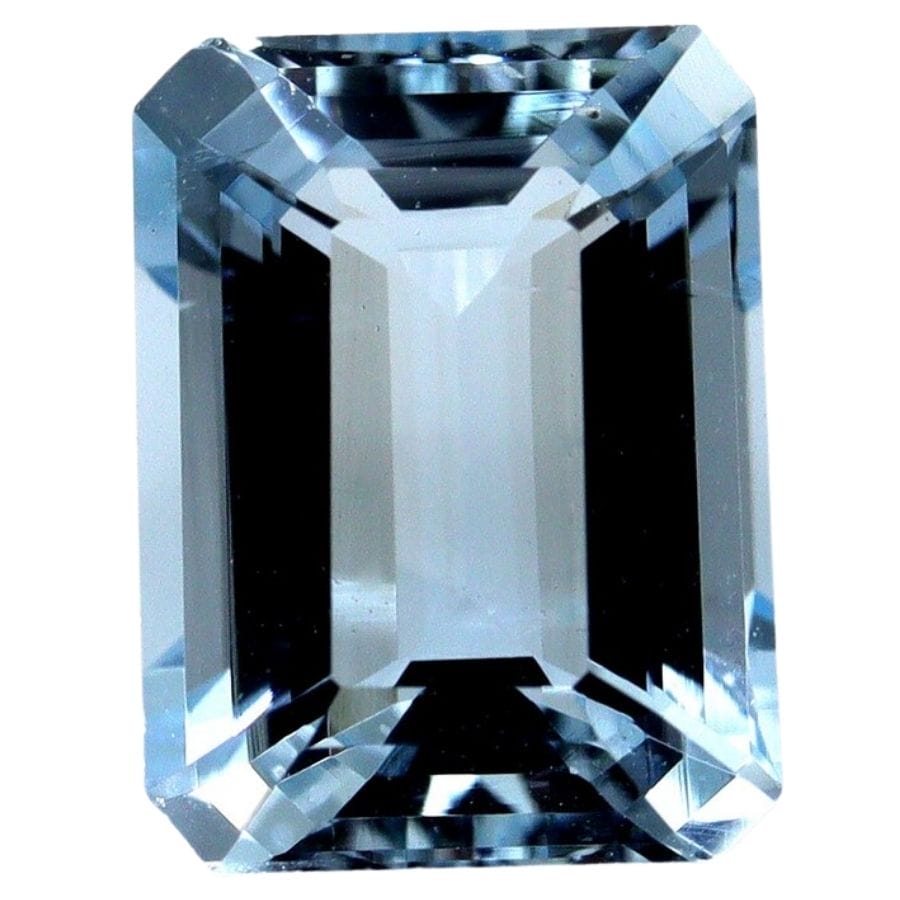
Aquamarine is a pretty gemstone that’s part of the beryl family, which also includes emeralds. It forms in pegmatites, which are a type of rock formed from lava or magma, and is mainly found in countries like Brazil, Nigeria, and Pakistan.
This gem is famous for its beautiful sea-blue color, which can range from light to dark blue, sometimes with a slight greenish tint.
Aquamarine has a glassy shine and scores 7.5 to 8 on the Mohs scale. Additionally, it grows in hexagonal crystals.
Aquamarine is great at keeping its color, even if it spends a lot of time in the sun. This is because the elements that give it its blue color are very stable and don’t react to sunlight.
Morganite
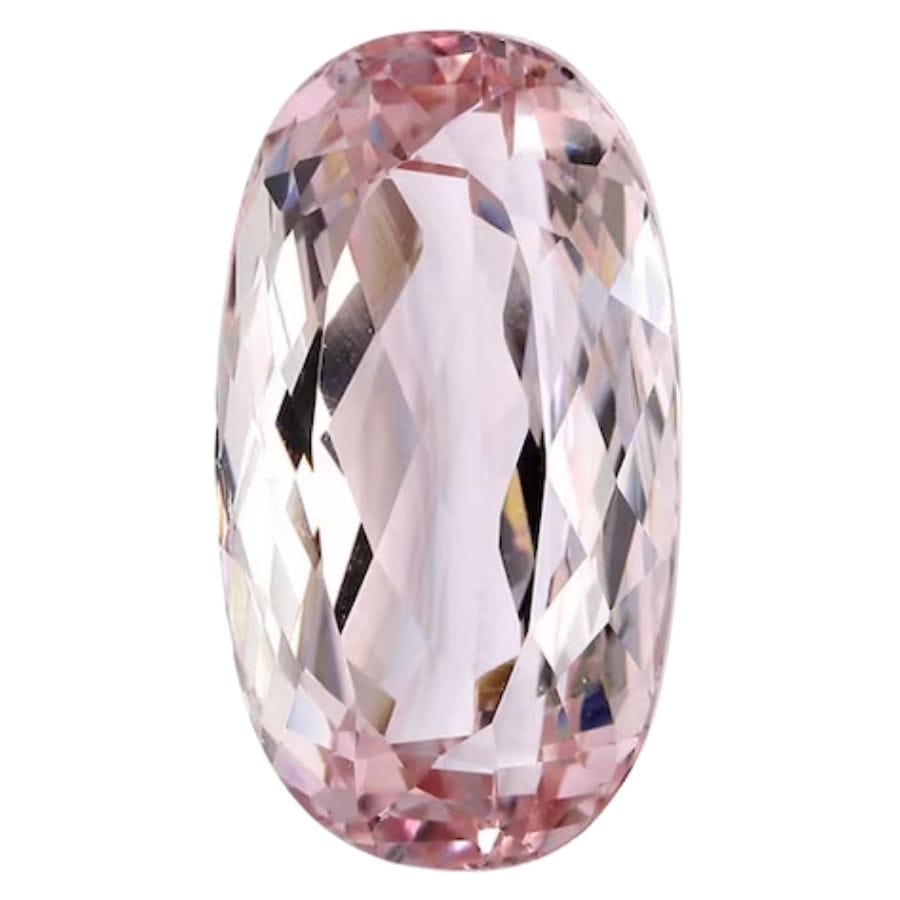
Morganite is a beautiful pink gemstone that’s also part of the beryl family, just like aquamarine and emerald. It forms in pegmatites, which are rocks that come from magma deep under the Earth’s surface.
This stone is loved for its range of pink colors, from soft peach to violet-pink. Morganite has a shiny, glass-like surface, a hardness of 7.5 to 8 on the Mohs scale.
Morganite’s pink color stays true even when exposed to sunlight for a long time. So, morganite jewelry keeps its warm, lovely glow even with everyday wear in the sun.
Jade
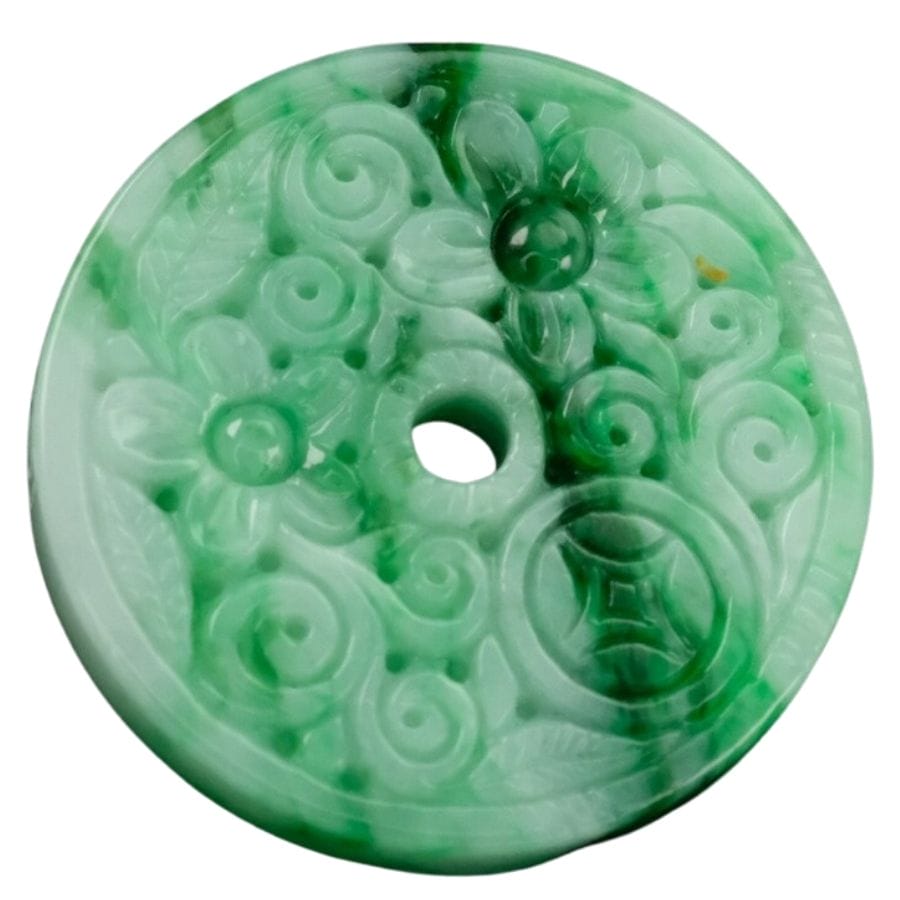
Jade is a special stone that actually comes in two different types: nephrite and jadeite. It’s usually found in rocks that have been changed by high pressure and low temperature.
Jade can be many different shades of green, but it can also be white, orange, yellow, and even black. It has a smooth, greasy luster and is super tough, making it harder to break than many other stones.
Also, jade doesn’t have a set crystal structure because it’s made up of tiny interlocking mineral fibers.
This tight, interlocking structure and the stability of jade’s chemical makeup are the reasons why its color doesn’t fade in the sun. So, a piece of jade can keep its beautiful color for a very long time.
Howlite
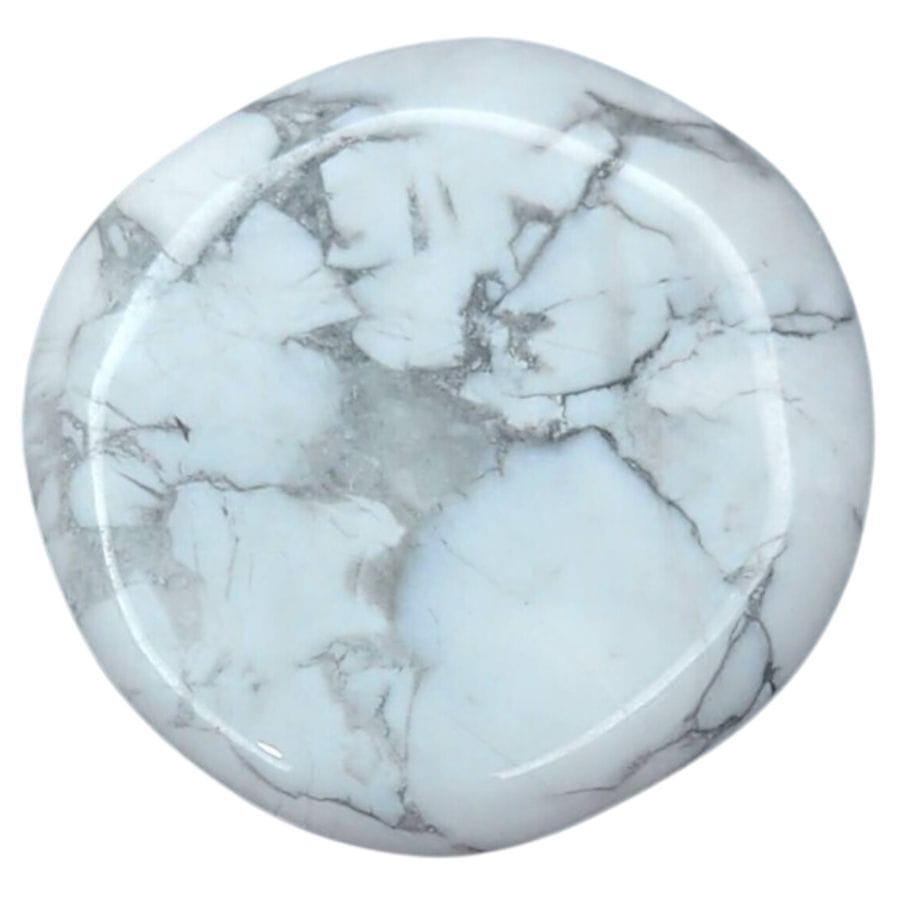
Howlite is a cool mineral that’s usually found in evaporite deposits, which are layers of minerals left behind when lakes and seas evaporate. It’s often discovered in places like Canada, where it was first found, and also in parts of the USA.
Howlite is mostly white or light grey and has a web-like pattern of darker grey or black lines running through it. It has a sub-vitreous to dull luster and forms in irregular nodules with a porous structure.
The color of howlite stays pretty much the same even when it’s out in the sunlight for a long time. This is because the color and composition of howlite are stable and don’t react much to light exposure.
Moss Agate
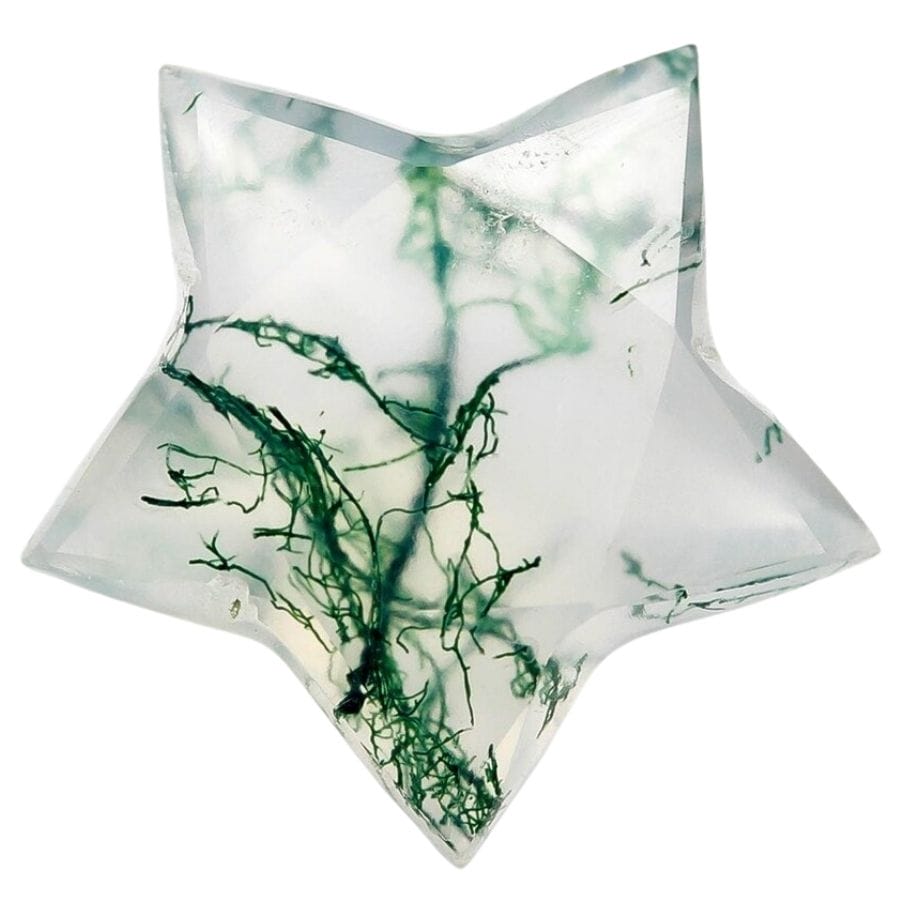
Moss agate doesn’t have the bands that agates are known for. Instead, it contains mineral inclusions resembling moss.
This stone is mostly transparent or milky-white with green, blue, red, or black inclusions that give it a mossy appearance. Moss agate has a waxy luster and a hardness of 6 to 7 on the Mohs scale.
The reason moss agate keeps its looks even when exposed to sunlight is due to the stability of the silica and the mineral inclusions that give it its color.
These inclusions don’t fade easily under sunlight, meaning the stone’s unique moss-like patterns remain vibrant over time.


